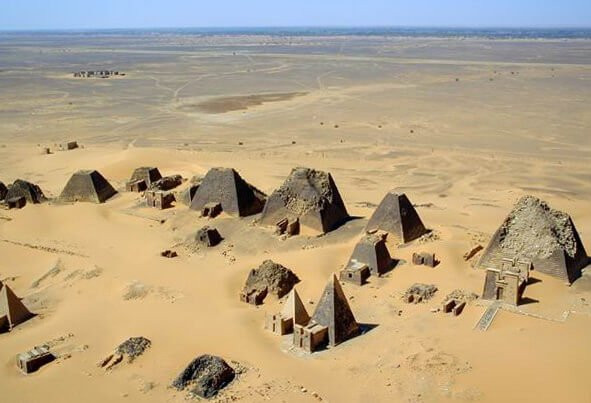An Ancient Tapestry of Cultural Exchange

For millennia, the ancient civilizations of Egypt and Kush, located in present-day northern Sudan, were intertwined in a profound cultural exchange that left an indelible mark on the Kushite kingdom. This intricate relationship, spanning centuries, transcended mere imitation; it was a dynamic fusion of two great powers that shaped the religious, architectural, and artistic landscapes of both civilizations.
Roots of Influence: Trade and Conquest
The roots of this cultural interplay can be traced back to the Old Kingdom of Egypt (c. 2686–2181 BC), when trade and military campaigns first brought the two regions into contact. As the Middle Kingdom (c. 2055–1650 BC) dawned, Egyptian influence in Kush deepened, leading to the establishment of Egyptian fortresses within Kushite territory. This period of direct control was pivotal in transmitting Egyptian cultural elements to the Kushites.
Embracing the Divine: Religion’s Transformative Legacy
The Syncretism of Deities
Religion was a significant arena where Egyptian influence manifested in Kush. The Kushites adopted many Egyptian deities, most notably Amun, the supreme god of the Egyptian pantheon. The temple of Amun at Jebel Barkal, a sacred site revered by both Egyptians and Kushites, stands as a testament to this religious synthesis.
Adapting Sacred Traditions
The Kushite interpretation of Egyptian gods often involved integrating them with local deities, creating a unique religious blend that highlighted both Egyptian and indigenous characteristics. Furthermore, the practice of pyramid building for royal burials, a hallmark of Egyptian funerary traditions, was adapted to local customs and styles in Kush, resulting in the distinct Nubian pyramids – smaller and steeper than their Egyptian counterparts.
Architectural Grandeur: Stone Echoes of an Ancient Civilization
Monumental Fusion

Egyptian architectural influence is most visible in the grandiose structures that dot the Kushite landscape. The construction of temples, palaces, and pyramids in Kush followed Egyptian architectural styles but also incorporated distinct local elements, demonstrating a fusion rather than mere imitation. Egyptian motifs, column designs, and temple layouts were skillfully blended with Kushite elements, creating a unique architectural tapestry.
Artistic Expression: A Canvas of Cultural Interchange
Embracing Conventions, Infusing Originality

Kushite art, heavily influenced by Egyptian styles, especially during the New Kingdom (c. 1550–1070 BC), is a vivid illustration of this cultural exchange. Egyptian artistic conventions, like the depiction of figures in profile and the use of hieroglyphs, were widely adopted in Kushite art. However, Kushite artisans infused these elements with local flavors, evident in the portrayal of Kushite physiognomy and dress in art and sculptures, creating a distinctive aesthetic that celebrated both cultures.
The Kushite Pharaohs: Cultural Renaissance and Preservation
The Zenith of Influence

The zenith of Egyptian influence on Kush can be seen during the 25th Dynasty (c. 747–656 BC), when Kushite rulers, known as the “Black Pharaohs,” conquered and ruled Egypt. This period saw the resurgence of traditional Egyptian art and architecture under Kushite patronage, symbolizing a cultural renaissance. The Kushite Pharaohs not only embraced Egyptian traditions but also played a crucial role in their revival and preservation.
The cultural exchange between Egypt and Kush was a dynamic and complex process that transcended mere imitation. The Kushites adopted and adapted Egyptian religious, architectural, and artistic elements, creating a distinct culture that resonated with Egyptian influences yet retained its unique character. This interaction highlights the interconnectedness of ancient civilizations and the importance of cross-cultural influences in shaping the historical narrative of the Nile Valley civilizations, leaving an enduring legacy that continues to captivate scholars and admirers alike.

